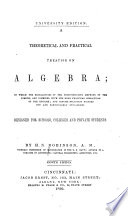 | Horatio Nelson Robinson - Algebra - 1850 - 358 pages
...side with a contrary sign. From this we may draw the following principle or rule of operation : Amj term may be transposed from one member of an equation to the oiher, by changing its sign. Now 20a;=80. ax=-e. If we divide both members by the coefficient of the... | |
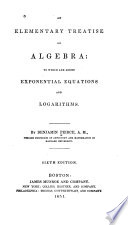 | Benjamin Peirce - Algebra - 1851 - 294 pages
...x" — x~ " from fractions and negative exponents. Ans. x 4 "a 2 * — a 2l =:a 4 *x 2 " — x 2 ". 117. Theorem. A term may be transposed from one member...annexed to the other member with its sign reversed from -f- to — , or from — to -f- . Proof. For suppressing it in the member in which it at first occurs... | |
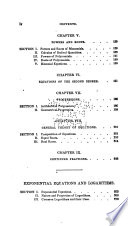 | Benjamin Peirce - Algebra - 1855 - 308 pages
...a~* a*.\.a~x x" — z~" from fractions and negative exponents. Ans. z4oa21 — a2x = a4lx2" — i2". 117. Theorem. A term may be transposed from one member...annexed to the other member with its sign reversed from -f to — , or from — to _j- . Proof. For suppressing it in the member in which it at first occurs... | |
 | Thomas Sherwin - Algebra - 1855 - 262 pages
...preceding principle with that given in Art. 17, we have the following GENERAL RULE FOR TRANSPOSITION. Any term may be transposed from one member of an equation to the other, provided its sign be changed from -f- to — , or from — to -\-. , ART. 31* 1. B was 10 years older... | |
 | Samuel Alsop - Algebra - 1856 - 152 pages
...«54:. From the first of the above principles it follows that by changing the sign of any quantity it may be transposed from one member of an equation to the other, without destroying the equality. Thus, in the equation 4 x — 20 = 3 x + 56, the addition of 20 to... | |
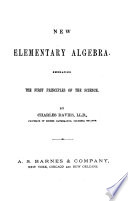 | Charles Davies - Algebra - 1859 - 324 pages
...sign of addition. 106. Therefore, for the transposition of the terms, we have the following RULE. Any term may be transposed from one member of an equation to the other, if the sign be changed. 105. What is transposition ? EXAMPLES. Transpose the unknown terms to the first... | |
 | Charles Davies - Algebra - 1860 - 328 pages
...diminished by 8 : hence, 2z = 36 - 8 = 28 28 , or x = — = 14. ii Hence, we see that a plus number may be transposed from one member of an equation to the other, by simply chang ing its sign to minus. Let x denote the son's age : then 2ж will denote the father's... | |
 | Charles Davies - Algebra - 1861 - 322 pages
...and Charles' share = 10 — 5 = 5. REMARK. — We see from the above example, that a negative number may be transposed from one member of an equation to the other by simply changing its sign to plus. 2. A person goes to a tavern where he spends three shillings :... | |
 | Thomas Sherwin - 1862 - 252 pages
...preceding principle with that given in Art. 17, we have the following GENERAL RULE FOR TRANSPOSITION. Any term may be transposed from one member of an equation to the other, provided its sign be changed from -j- to —, or from — to -f-. ART. 31. 1. B was 10 years older... | |
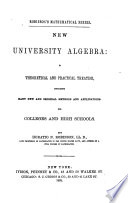 | Horatio Nelson Robinson - Algebra - 1863 - 432 pages
...Hence, for changing the sign or place of any term of an equation we have the following RULE. I. Any term may be transposed from one member of an equation to the other by changing its sign; (1, 2). II. Any term may be transposed -without changing its sign, provided the... | |
| |